Da Vinci Maestro Series 10 Brush Review for Miniature Painters
Last Updated on April 23, 2021 by FauxHammer
As a keen miniature painter for a couple of years, I have bought many brushes – mostly GamesWorkshop Citadel brushes. I haven’t tried any other high-quality brands so, when I received the Da Vinci Maestro Series 10 brushes, I was very excited. I’ve never owned a sable brush and I’m intrigued to see how they compare to synthetic.
Please Note: This site uses affiliate links. Our Affiliate Partners are shown below
(Affiliate links will result in compensation to the site on qualifying purchases)
Click this link & buy your hobby stuff from Element Games for the UK & Europe to support FauxHammer.com – Use Code “FAUX2768” at the checkout for double reward points.




Our Affiliates / Hobby Stores
- UK: Element Games, The Outpost, Wayland Games, Mighty Lancer, Goblin Gaming, Forbidden Planet, Model Scenery Supplies, eBay, Amazon
- US/Canada: MTechCave, GameKastle, eBay (US), eBay (CA), Amazon
- Germany: Taschengelddieb
- Europe: eBay (DE), eBay (FR), eBay (ES), eBay (IT), Amazon
- Australia: eBay, Amazon
- Global: RedGrass Games, Warcolours
- 3D Printers: Phrozen 3D, Elegoo, Anycubic
FauxHammer – Latest Video on YouTube
Da Vinci Maestro Series 10 Review – Summary
In this review, I will look at the performance and characteristics of the Da Vinci Maestro Series 10 brushes. From first impressions they look like regular hobby brushes with their black polished handles and gold lettering. However, the quality of the brushes is of a high-end product.
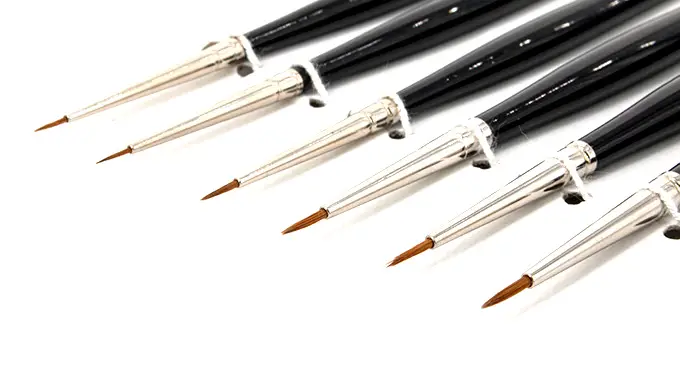
With this series of brushes, Da Vinci are providing a high quality sable brush with a sharp needle-like point, excellent water carrying abilities, great spring and control. Most of the brushes maintain their shape well throughout painting and will last, provided with good care.
These brushes have greatly improved my painting, making the hobby much more enjoyable.
Every brush in this set is well shaped with a nice sharp tip. They have a long body to carry lots of water and paint. Unfortunately, while painting with the brushes, a few issues came to light. These are only minor irritations, but they do impact the overall feel of the brushes and quality.
Da Vinci – The Company
Da Vinci are a brush manufacturer based in Nürnberg, Germany – hence the ‘Made in Germany’ in gold lettering on each of the brushes. They produce Artist, Cosmetic, Nail and Dental brushes.
Da Vinci has long-standing experience in manufacturing high-quality artist brushes. They use quality materials and traditional skilled craftsmanship to create carefully shaped products.
They strive to meet the needs of customers throughout the world who are looking for quality tools.
Da Vinci Maestro Series 10 Brush Set Overview and Design
The Da Vinci Maestro Series 10 brushes are actually designed for watercolour paints. However, they work incredibly well with acrylic paints used for miniature and table-top painting. As they handle thinned paints, the techniques of glazing and wet blending will work particularly well with these brushes.
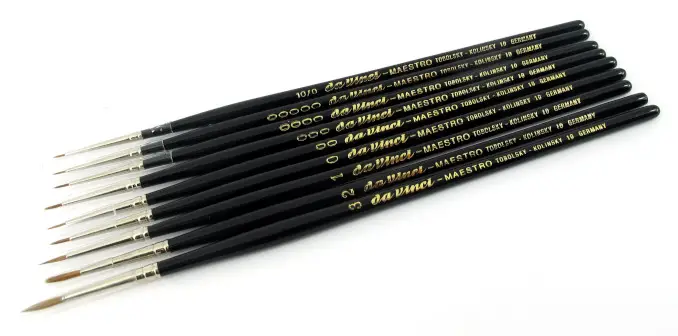
The brushes in this set are made from Tobolsky Kolinsky Red Sable. They feature long tapered hairs shaped into a fine point with excellent elasticity. They have a short black polished handle and a silver coloured metal ferrule. The round brushes in this set range from size #10/0 up to #3.
Da Vinci Maestro Series 10 – Brush tests
In this review, I have done tests on each of the brushes to convey their properties (how well they hold paint, maintain their shape and distribute pigment). I will go into detail about each brushes’ performance individually and explain what this shows. For each test I used acrylic paint – Vallejo Model Colour Brown Sand thinned slightly with water.
Da Vinci Maestro Series 10 – #3
This brush is ideal for base coating or washes over large areas. It has a good rounded shape and a nice point to its end.
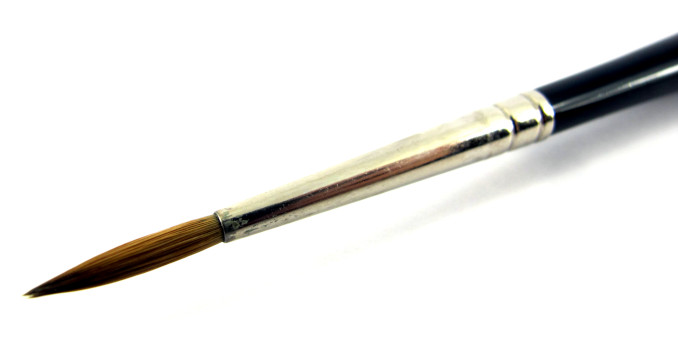
Please note that the unevenness of some of the brush strokes are due to the thicker acrylic paint. While painting minis, I found that it’s a good brush, mainly suitable for undercoating.
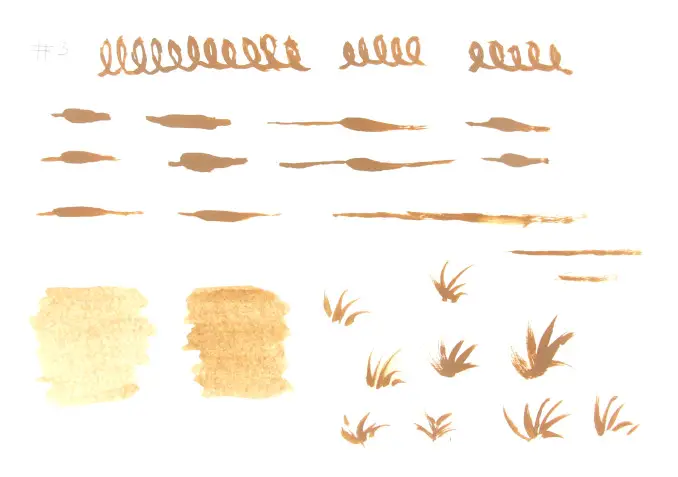
The loops show a fairly even distribution of pigments throughout. The brush splayed a little when it reached the top of each loop (a movement problem). It held a lot of paint to reduce the time needed to go back to the palette. The brush returned very quickly to its original point after it was pressed down.
Da Vinci Maestro Series 10 – #2
Size #2 is slightly smaller, but is too big for painting details. Therefore I used it in the same way as #3.
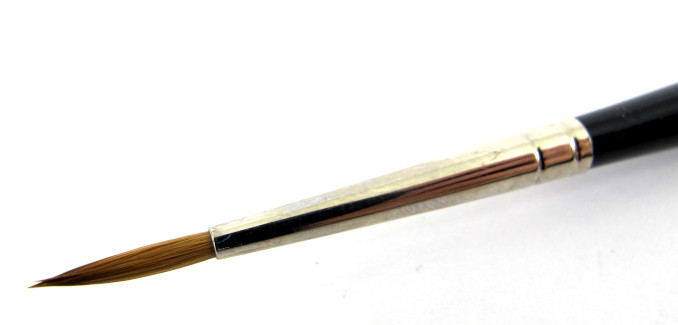
#2 is very similar to #3, however it has better maneuverability. It also performed slightly better in the following tests.
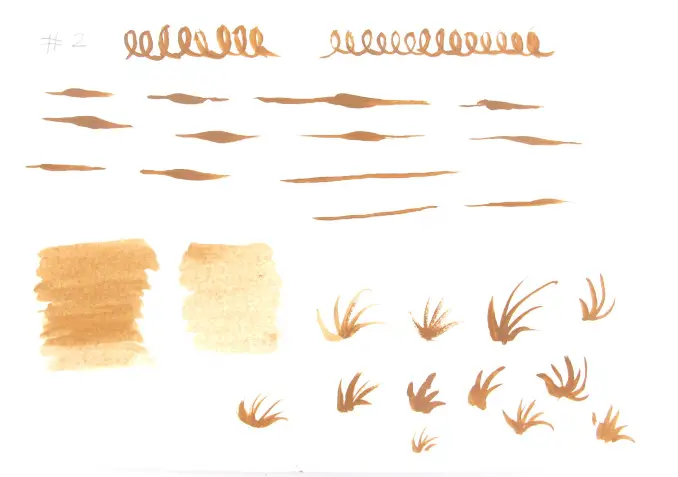
This brush held a lot of paint (see the long line of loops) and evenly deposited the pigment throughout. It also maintained its shape and refrained from splaying.
Da Vinci Maestro Series 10 – #1
#1 is a finer brush and is a good size for base coating and washing smaller areas of a model.
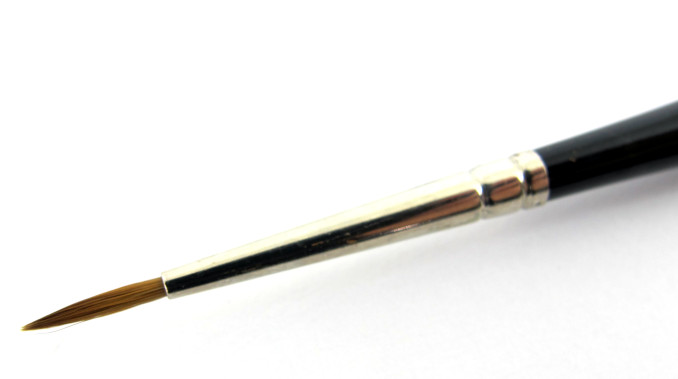
While painting models, #1 kept its rounded point and was really nice to work with.
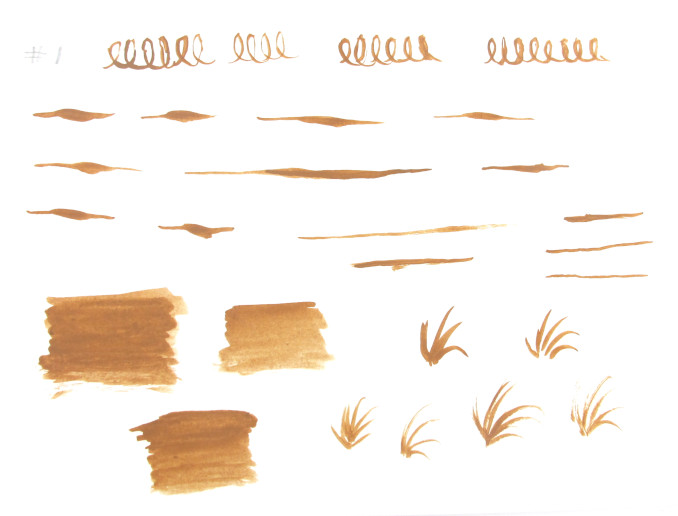
This brush maintained its fine point throughout and returned to its original shape when splayed. #1 made significantly smaller and thinner lines than #3 and #2.
Da Vinci Maestro Series 10 – #0
#0 has an excellent point and would be great for large details or base coating small areas.
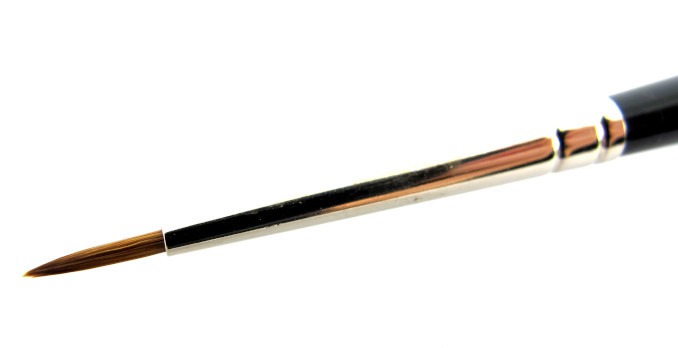
This brush is similar to #1, but is more accurate and better for smaller areas of a model.
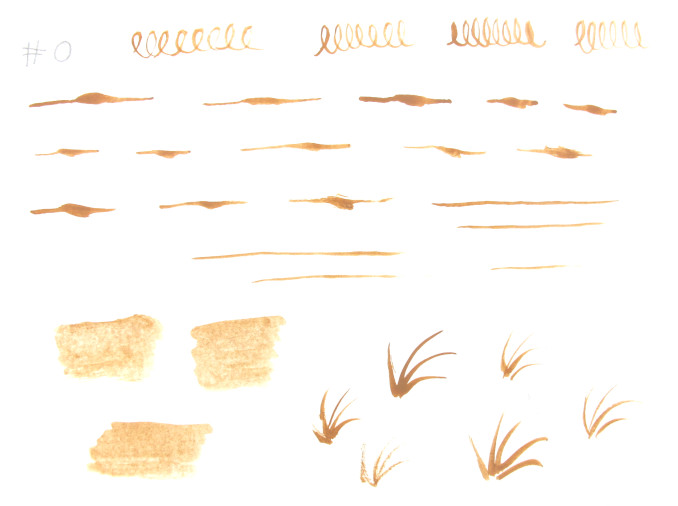
This brush has excellent movement and can create thin lines. It snapped back to its original shape when pressed down and splayed. It spread the pigment evenly and consistently – especially in the washes (bottom left).
Da Vinci Maestro Series 10 – #00
#00 has a nice rounded point, however it has some issues.
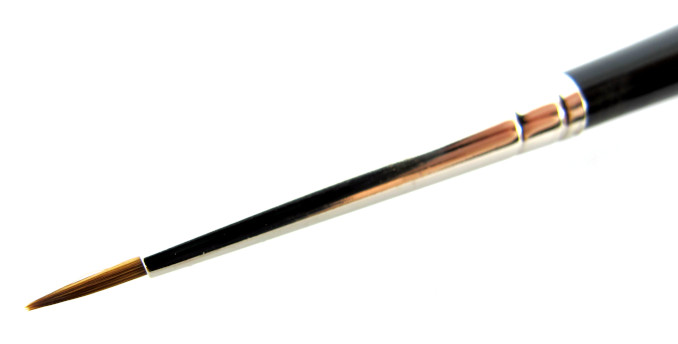
Painting models revealed an issue with splaying. I found this brush to be the most disappointing in this set. It splayed quite a lot and I opted for using #0 or #000 instead.
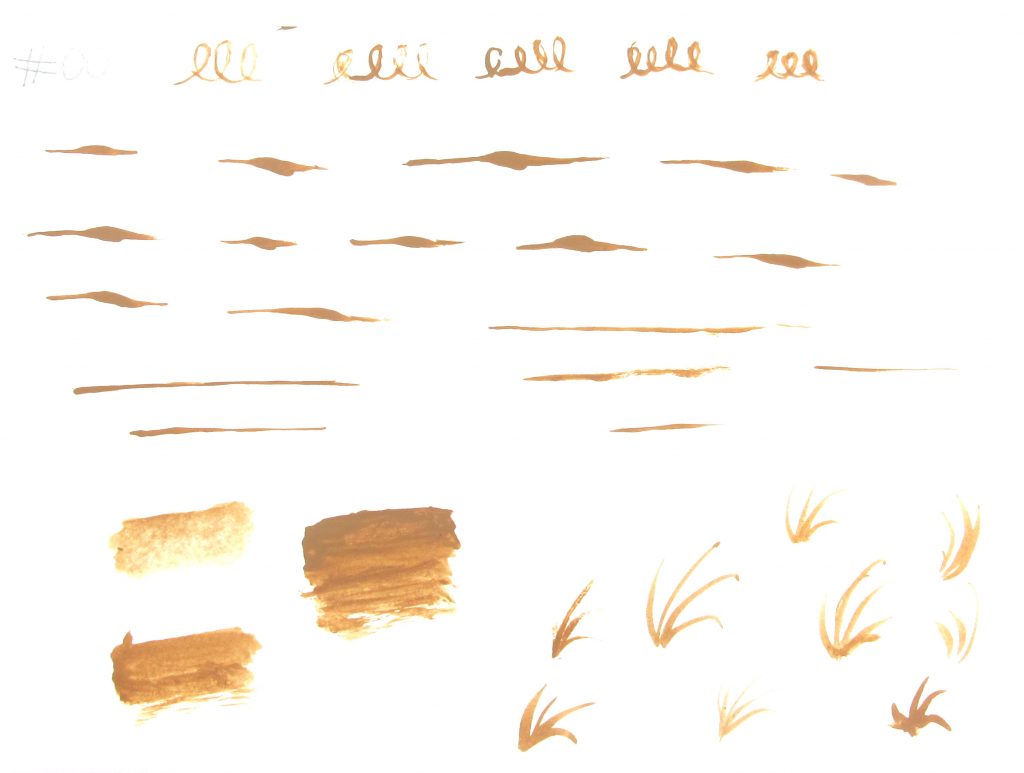
The loops at the top and the washes at the bottom show an uneven distribution of paint. This is a shame, otherwise it appears a good brush until I used on an actual mini.
Da Vinci Maestro Series 10 – #000
Size #000 is a good detail brush with a nice rounded tip and it had excellent elasticity.
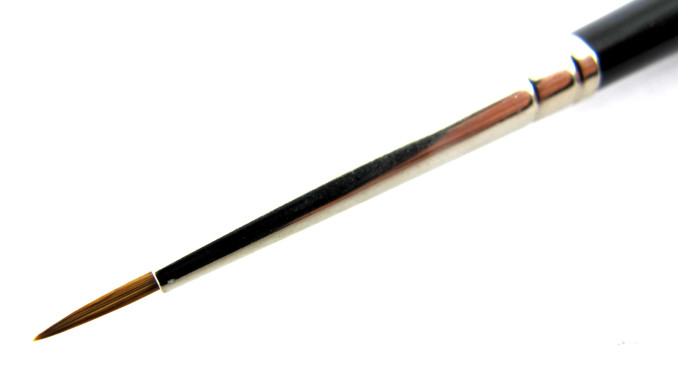
I found that when painting minis, the brush splayed a little when going around the curved shoulder armour of the Space Marines. This was easily fixed by touching up though.
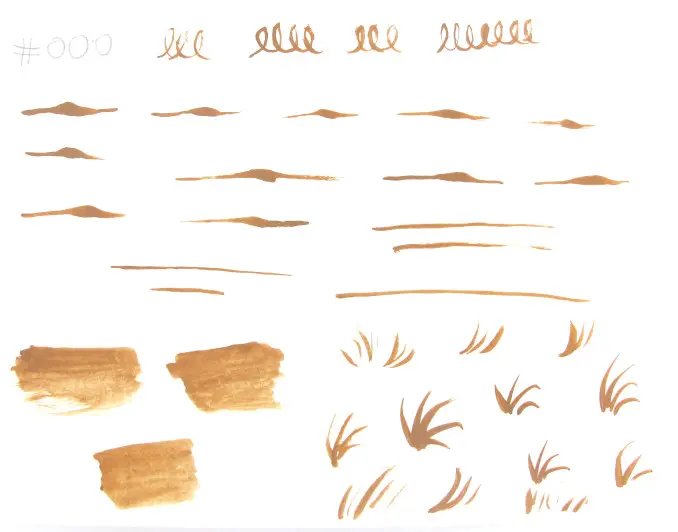
This brush performed well in the tests and held its shape. There is a slight problem with movement on some of the loops but it’s nothing major.
Da Vinci Maestro Series 10 – #0000
#0000 is my favorite brush in this set. It performed exceptionally well in all the tests. It has a perfectly rounded point. The brush is great for fine details and some edge highlighting.
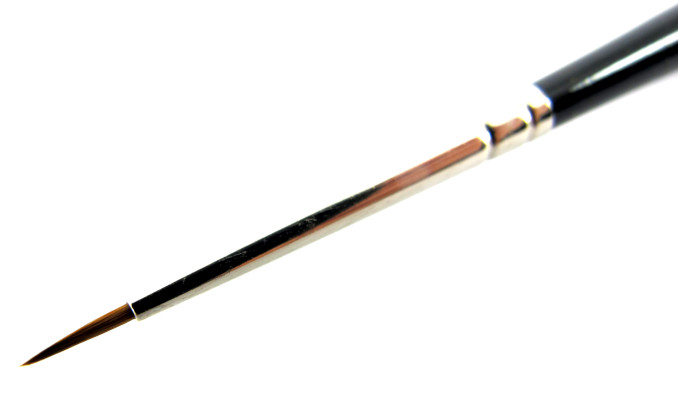
I used this brush the most when painting minis. It performs brilliantly and was easy to control when painting tiny areas.
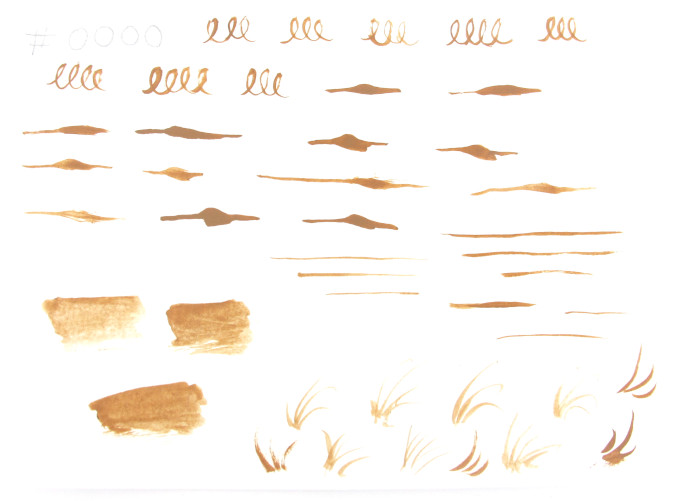
This brush produced well formed loops which are all fairly consistent with even distributions of pigment. It returned back to its original shape after being splayed and held its form excellently.
Da Vinci Maestro Series 10 – #00000
I didn’t use this brush as much since I prefer #0000, which is of a similar size with better pigment distribution and control.
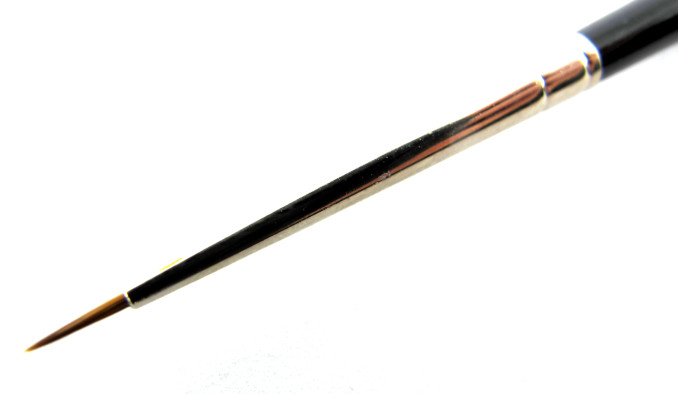
#00000 has a good pointed end and performed nicely in the tests. Unfortunately, it didn’t distribute pigment very well, but this doesn’t really affect how it paints when used on a model.
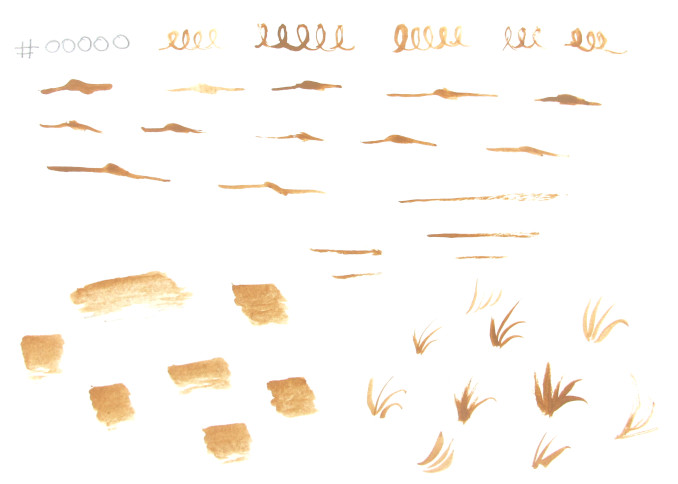
This brush performed well when splayed and quickly returned to its original shape. However, the pigment distribution on the loops was not so good and it has a small movement problem.
Da Vinci Maestro Series 10 – #10/0
This brush is great for the smallest of details (particularly faces) and edge highlighting with its sharp point.
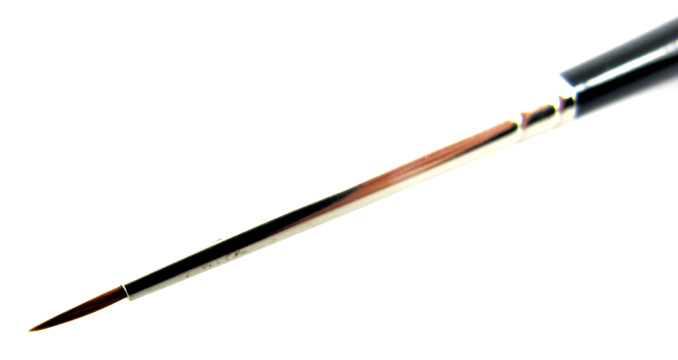
This is the smallest brush in this set. It’s great for fine detail work on models, but it did sometimes struggle with movement around tight areas.
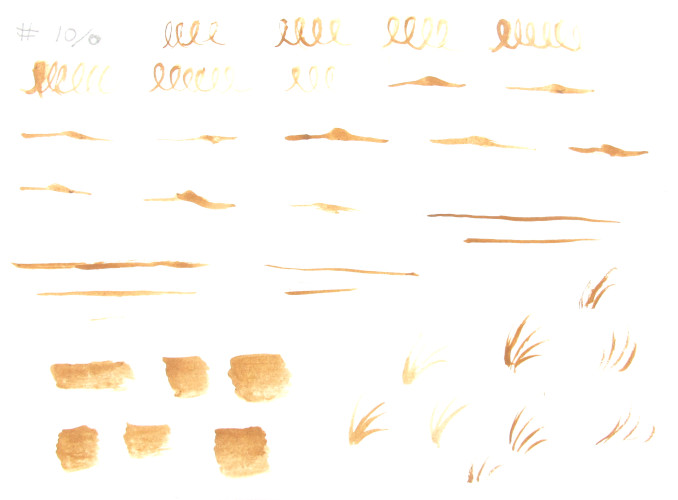
It was difficult to perform the tests with this brush – it’s too small and didn’t hold much paint. The brush snapped back to its original shape after being pressed down and creates very fine lines. However, it did struggle with movement around the tight curves of the loops.
Sometimes paint would end up spreading to where it wasn’t wanted (hence the thickness of some of the loops).
Da Vinci Maestro Series 10 brushes – Mini Painting
I have been painting for a couple of years now. However, I have never considered myself an expert or even an intermediate painter. There is still many techniques to learn and with plenty of practice my painting will continue to improve. What I’m trying to say is that I’m an experienced beginner if that makes any sense.
For this review, I have chosen to paint Idoneth Deepkin Namarti Reavers with the Da Vinci Maestro Series 10 brushes. I tend to shy away from models with a lot of skin and difficult details, but I was feeling brave. These models would be great to showcase the brushes’ performance.
Painting – Base Layers
For the base layers of this model, I used the #1 and #00 brushes. #1 applied the paint well and didn’t splay. However, #00 did splay while painting which is disappointing. Overall, I managed to get the base layers down efficiently and accurately.
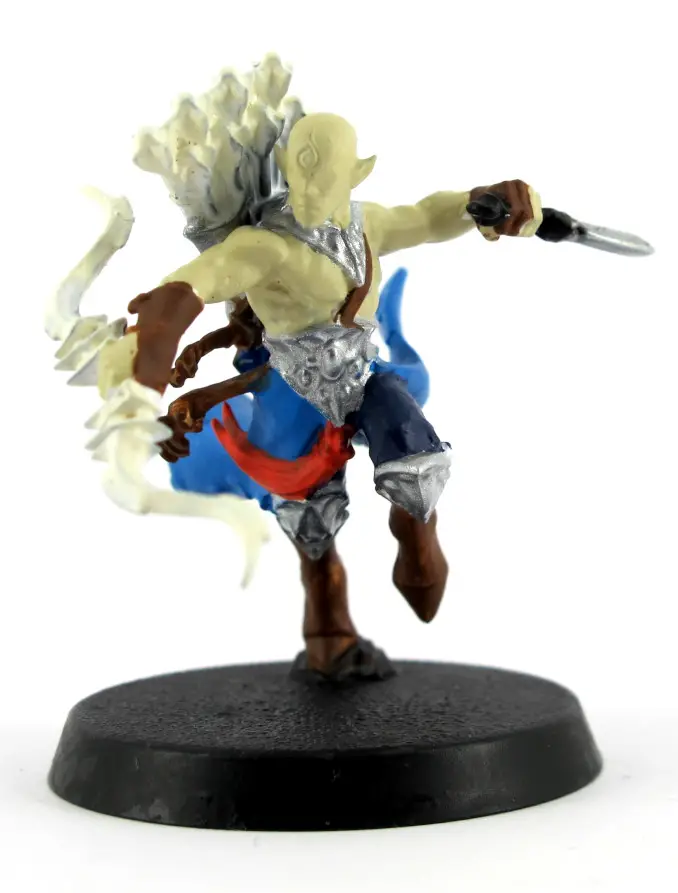
I painted this model after the two completed ones further on in this article. Since then I have refined my colour scheme and gained more experience due to practice.
Painting Details
For the details on these models I mainly used #10/0 and #0000 brushes. They are the perfect shape and size for edge highlighting, small details and facial features.
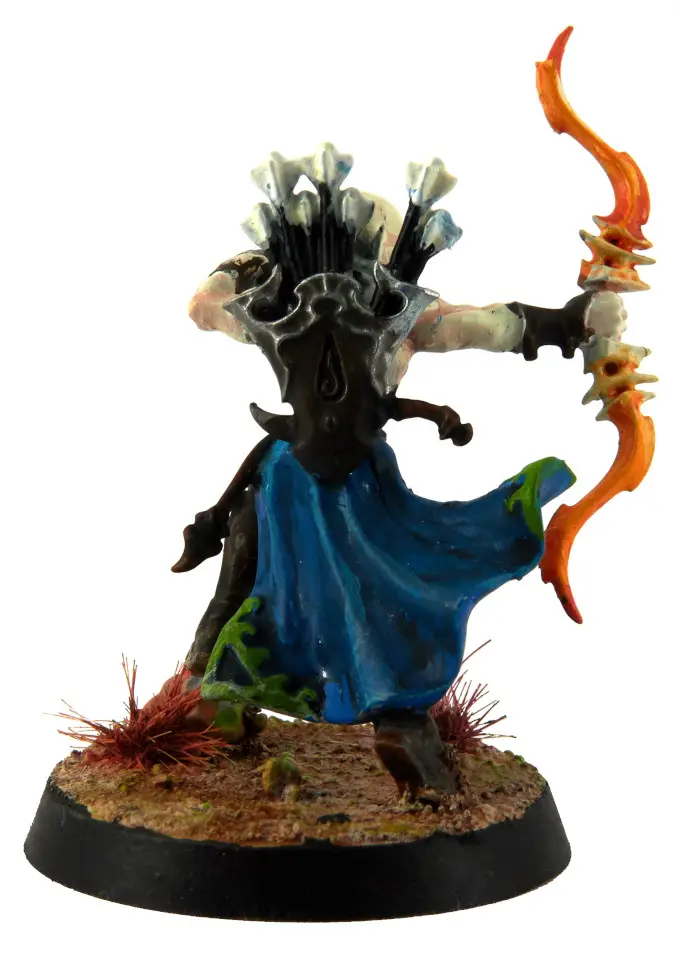
The embellishments on the corners of his cape were easy to paint. Due to the brush’s sharp rounded point, there was less of a need to touch up as many errors. As you can see, I still need to fix some areas, but it’s nothing compared to what I usually have to do.

The small embellishments around her neck were painted with my favorite brush in the whole set, #0000. This brush never splayed while painting and had excellent movement and control. There are still some minor things that need touching up due to my shaky hands!
Painting Models
For the models featured in this review, I only used Da Vinci Maestro Series 10 brushes (even for the undercoat). I’m incredibly impressed with how they performed. The brushes I mainly used were sizes #3 (undercoat) #0 (base coat) #0000 and #10/0 (details). I generally prefer to paint with smaller brushes as fewer mistakes happen.
Unfortunately the layers of paint began to mount up on the models. I lost some of the definition and details – particularly their faces. This is a shame, but next time I will thin my paints down more. With practice comes improvement and again, I don’t claim to be a pro or even an intermediate painter.

Before 
After
Compared to the synthetic brushes I’ve used before, the Da Vinci Maestro Series 10 brushes were a blessing!
The brushes didn’t splay, held lots of paint, maintained their needle-like points and had great manoeuvrability. I saw a great improvement in my painting (seen in the photos above) and found the experience much more enjoyable. I didn’t need to fix as many errors that come with splaying and badly shaped brushes.
Da Vinci Maestro Series 10 – will these brushes improve my hobby / painting?
If you’ve never tried Kolinsky Sable brushes, then you’re missing out. The quality you get with Sable is so much better than synthetic. They are definitely worth a try. The best brushes are the brushes that work for you. By increasing the quality of your brushes, you will improve. So, these brushes will definitely improve you hobby.
Da Vinci Maestro Series 10 – Sable Vs Synthetic
I have been using synthetic brushes for a couple of years now. They have always done the job – I can’t say brilliantly, but they still worked. It was always difficult to paint details on models so I simply didn’t buy detailed models with faces, scars, etc… My synthetic brushes often splayed and have become completely deformed (I don’t think that even brush soap could fix them!). They constantly need replacing and just aren’t of a high enough quality to last very long.
In dramatic contrast, Kolinsky sable brushes are a miracle! They maintain their shape, refrain from splaying and hold their needle-like point so it’s much easier to paint fine details. I have never used Sable before, so I wasn’t sure on what all the fuss was about. Now I would never look back! I am definitely only going to use Sable brushes now and couldn’t ever want to go back to synthetic.
The Da Vinci Maestro Series 10 brushes are amazing. I love using them and will continue to for a long time. The difference these brushes have made to my painting is incredible.
To anyone who is using synthetic brushes – get yourself some Sable ones. You will never look back!
Da Vinci Maestro Series 10 – Availability
The Da Vinci Maestro Series 10 brushes are easy to get and are available in the UK, US and Europe.
Da Vinci Maestro Series 10 – Final Thoughts and Conclusion
| Pros: Good Value Excellent water / paint carrying ability Maintains shape – even after being splayed Nice rounded shaped brushes Good maneuverability High Quality Sable Fine needle like point | Cons: A few brushes have a minor movement problem Some splayed during painting due to the above issue Not all of the brushes have a sharp point, however this is fixed easily with brush soap or water Hard to get in US |
Overall, I would say that the Da Vinci Maestro Series 10 brushes are definitely worth buying. Both new and experienced painters will find these brushes useful. They are excellent value for money, considering that they are a high-quality product. The brushes hold large quantities of paint and water which increase the working time with the brush. They maintain their shape incredibly well and rarely splay. The smaller brushes are a nice size for painting details on minis. They refrain from spreading paint where you don’t want it to go.
The only minor imperfections with these brushes are that a few have a small problem with movement. They can splay when going around tight bends. However, this is only a minor irritation and they are still worth buying.
You will find, like I have, that these brushes will improve your hobby and are wonderful to work with.
Da Vinci provided these brushes free of charge for a review
Please Note: This site uses affiliate links. Our Affiliate Partners are shown below
(Affiliate links will result in compensation to the site on qualifying purchases)
Click this link & buy your hobby stuff from Element Games for the UK & Europe to support FauxHammer.com – Use Code “FAUX2768” at the checkout for double reward points.




Our Affiliates / Hobby Stores
- UK: Element Games, The Outpost, Wayland Games, Mighty Lancer, Goblin Gaming, Forbidden Planet, Model Scenery Supplies, eBay, Amazon
- US/Canada: MTechCave, GameKastle, eBay (US), eBay (CA), Amazon
- Germany: Taschengelddieb
- Europe: eBay (DE), eBay (FR), eBay (ES), eBay (IT), Amazon
- Australia: eBay, Amazon
- Global: RedGrass Games, Warcolours
- 3D Printers: Phrozen 3D, Elegoo, Anycubic
FauxHammer – Latest Video on YouTube
What did you think of this Review? Please let us know in the comments.
If you like what we’re doing here you could really help encourage more content with a share on any social media platform.
Click the share links at the bottom of this screen (or on the left for computers and tablets)
Want to keep updated with the site? You can subscribe in the sidebar for RSS or by email below
(Sidebar is below the article on Mobile Devices)

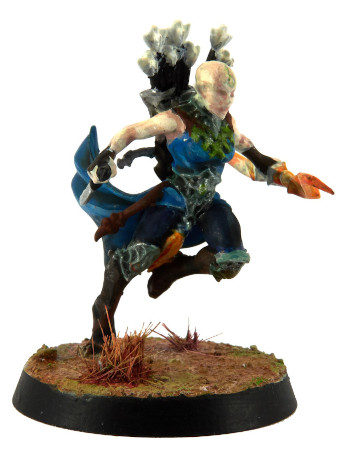
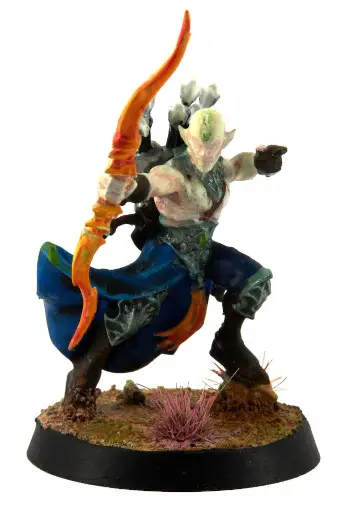
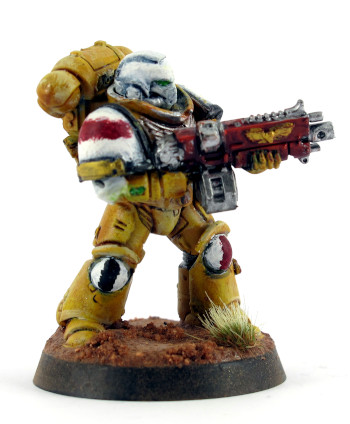
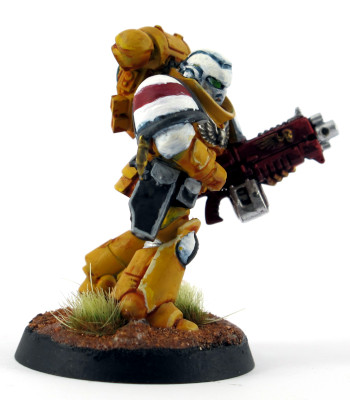

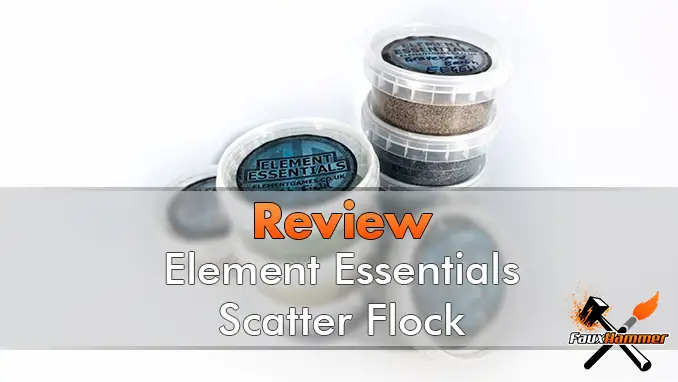
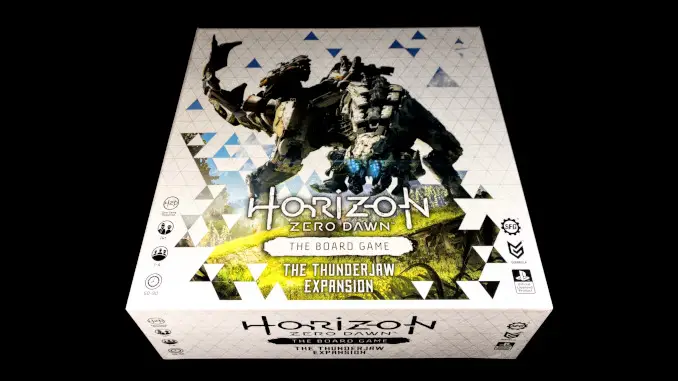
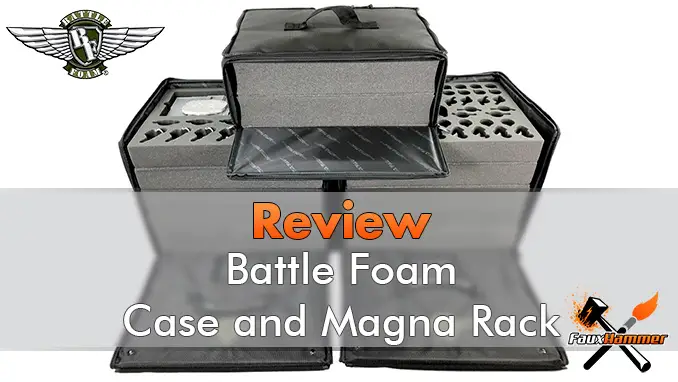
Enjoyable read thanks. Ive used these brushe and agree with your assessment on the 00 in particular, mine wont keep a point. Ive tied the 8404 range which was very good and i love the rosemary & co brushes…well worth a look. For everyday painting though, i still find it hard to beat armypainter for sheer value.
Chances are pretty good that you have used sable brushes before, but perhaps without realizing it.
Citadel Layer brushes are sable, and Shade brushes are a synthetic/sable blend. Base brushes are synthetic, of course, though that isn’t necessarily a bad thing for their intended purpose. Artificer is high-end Kolinsky, but hardly anyone buys those when W&N Series 7 brushes cost half as much.
Anyway, good that the Da Vinci set is working out well for you. I have tried some art-store watercolor brushes from other brands and my experience was not the best, so I tend to avoid them these days. They just weren’t holding up after a few uses.